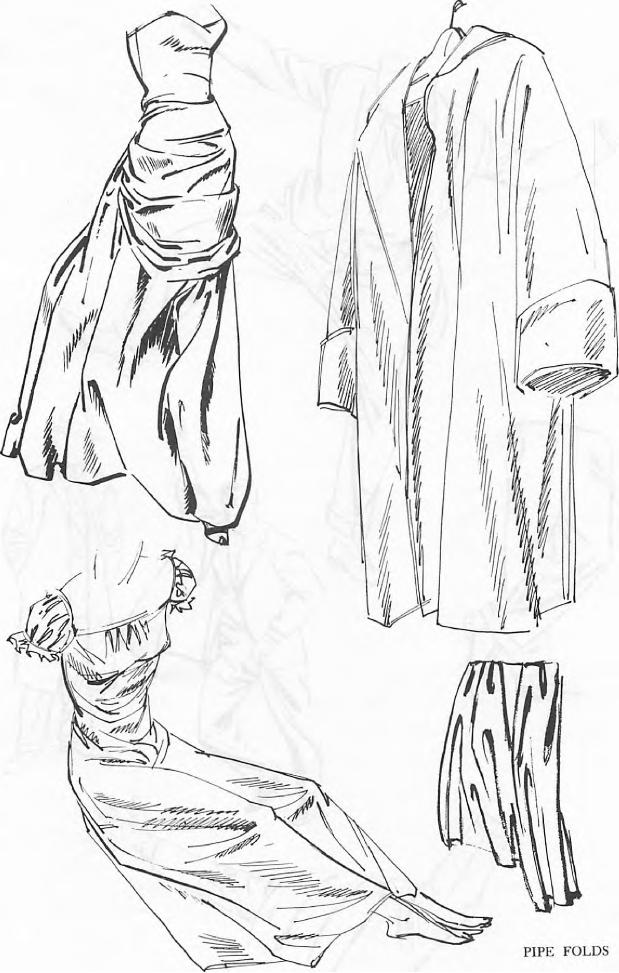

After learning to draw the human figure, the knowledge of drapery plays an important part in the
success of an artist. The careful studies left behind by the Masters show us how concerned they
were with the laws of drapery.
All types of cloth fall into the same folds. Each fold has a character
of its own. By recognizing and leaving out the unimportant and accidental folds, drapery will possess
design simplicity and power. All this contributes towards the composition of a well organized picture.

When drawing the clothed figure try to understand how the body underneath affects the material that
covers and surrounds it.
There are various points of attachment. Some parts of the figure are surrounded,
other folds indicate stress and resistance. All these folds fall into different laws.
Cloth that drops from
a fixed point results in long pipe-like forms.
When cloth is held by two points the folds drop toward each other, in diaper fashion. When a fold
presses against another fold it breaks up in a zig-zag fashion. In surrounding a form half way it
assumes a half cup form. The spiral fold is like a spiral around the form. Try not to repeat folds by paralleling
them and keep them of different widths.
In drawing cloth that is resting on the floor, establish first the shape
it covers. then build up the folds on top of it. In the following pages observe the different laws of folds.
Learn to recognize them and understand
Observe all of the different types of folds and wrinkles in the illustrative examples below.
Practice is the best way to learn, so try drawing all of the different types of folds for yourself until you got it down.



